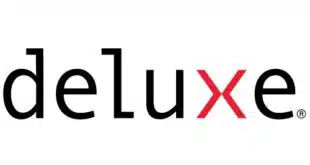School lunches often draw fire from students, who want tastier fare, and parents and nutritionists, who want healthier meals. But for merchant acquirer Heartland Payment Systems Inc., food service in schools is proving to be a profitable new payments niche.
Princeton, N.J.-based Heartland on Monday said it had acquired LunchByte Systems Inc., a provider of back-office management and point-of-sale systems for the food-service operations of about 10,000 elementary and high schools. The purchase price was not disclosed.
Following four similar acquisitions in late 2010 and 2011 for a collective $30.9 million, Heartland now offers payment-processing services at more than 29,000 public and private schools in the kindergarten through grade 12 market. Heartland claims to serve nearly 30% of the nation’s approximately 100,000 K-12 public schools.
In addition to handling payments at cafeteria registers, the services enable parents to go online to pre-fund meal accounts at their schools, sparing their sons and daughters from having to pay by cash or check. To pay, students typically present their school identification cards to the cashier for scanning, upon which the POS system deducts the meal charge from the account balance.
“The primary strategy for pursuing this is there are a lot of payment opportunities in K-12,” Michael A. Lawler, president of Heartland’s Strategic Markets Group, tells Digital Transactions News. “It’s a lot of students that are eating on a daily basis that we’d like to get payments for.”
In fact, the four earlier acquisitions gave Heartland access to the parents of 12.5 million students. Heartland would not say how many families are enrolled for online payment. “It varies from school to school,” says Lawler. “I would say overall there is a lot of opportunity for growth. It is growing on a month-to-month basis.”
Heartland makes parents aware of the electronic-payment services through printed materials that come home with students, e-mail marketing, Facebook and Twitter posts and even refrigerator magnets. Apart from the convenience of dispensing with cash and checks, part of the appeal to parents comes from the greater ability to control not only food expenses but also nutrition. The electronic accounts enable parents to know exactly what their son or daughter has purchased, and for how much.
A new Heartland-developed service called SeeMyPlate goes even further by allowing parents to view a picture of their student’s meal. If the school uses the service, a camera attached to the POS system takes a photograph of every meal the clerk enters during checkout. Parents can view their child’s meal through their online accounts. Lawler says a “small number” of schools use SeeMyPlate, but adds that it has been in the market only in the past year. The only cost to the school is about $200 per checkout station for a camera and related hardware.
Heartland is also talking to school administrators about adding other purchases to their payment systems, such as books, activity fees, and other charges. “It’s a large market, [a] good opportunity for a lot of payments,” says Lawler.
Heartland said in a recent investor presentation that the operating margins in its school business are “attractive” at more than 20%. Lawler calls the competition “a somewhat fractured market” dominated by smaller processors. About 10 companies each service 1,000 or more schools, he says. He would not say if Heartland has another deal in the works but adds, “We’re always looking and keeping our eyes open.”
The earlier acquisitions, the price and the number of schools the providers served were: Lunchbox, $7.7 million, 4,400; Comalex Inc., $6.1 million, 3,700; mySchoolBucks LLC, $1.5 million, 900, and School-Link Technologies Inc., $15.6 million, 10,000.
Heartland’s School Solutions unit also provides mobile-payment capabilities, integrated vending services, application processing for free and reduced-price meals, inventory management, and menu planning that can be integrated with the U.S. Department of Agriculture’s NuMenu nutritional data.
nn





